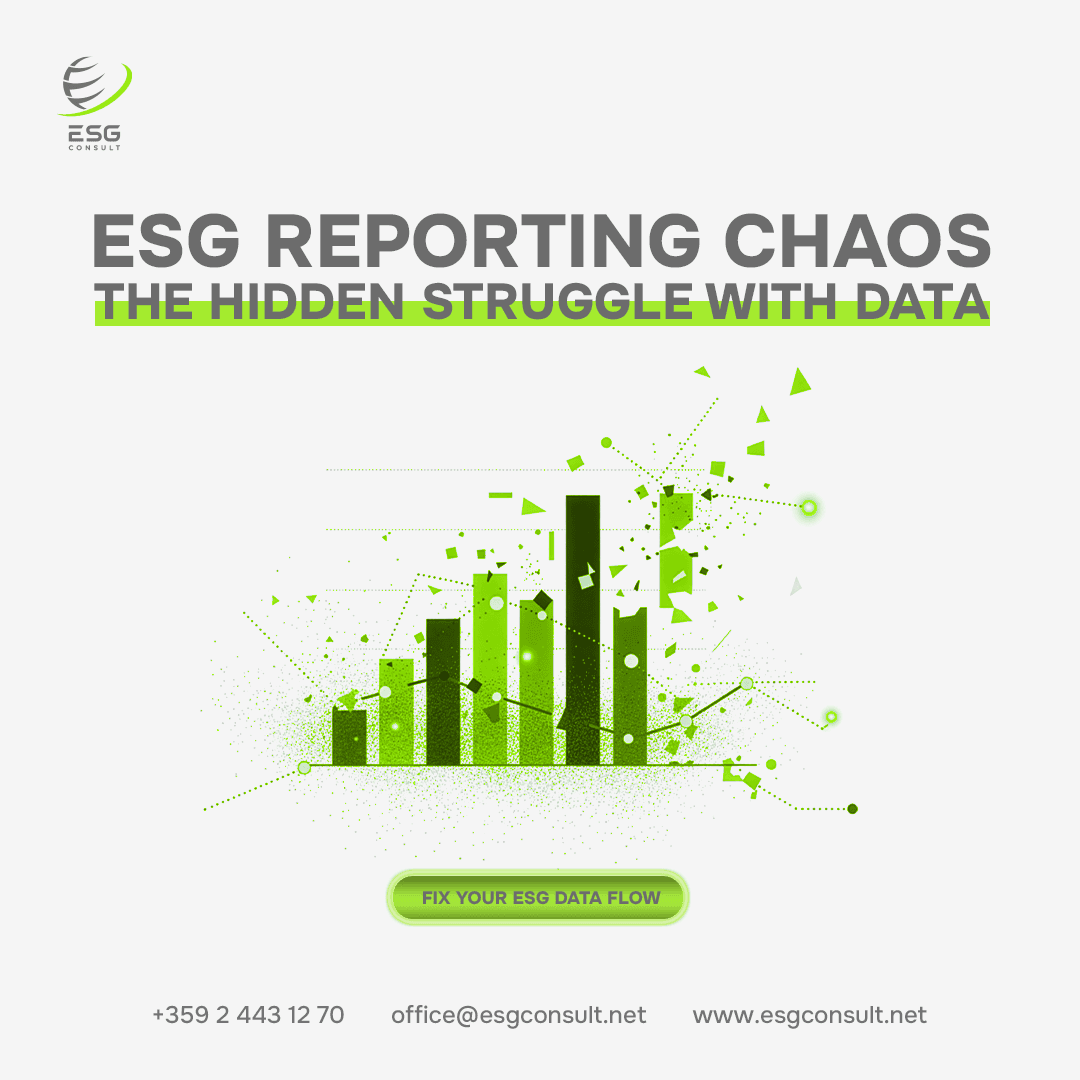ESG Reporting – The Hidden Data Chaos That Hinders Sustainability

ESG Reporting – The Hidden Data Chaos That Stops Sustainability
More and more companies in Bulgaria are trying to implement ESG reporting but are facing an unexpected obstacle – data chaos. Collecting, verifying, and consolidating environmental, social, and governance information often turns out to be more difficult than implementing the ESG strategy itself.
Where the Problem Arises
-
The data is scattered — across different departments, systems, and providers.
-
There is no unified standard for measuring and comparing ESG indicators.
-
Manual data entry leads to errors, delays, and a lack of transparency.
Many companies are unsure which data is actually mandatory under the upcoming European requirements (CSRD, ESRS, etc.).
How to “Fix” Your ESG Data Flow
Identify Your Data Sources – energy consumption, waste, human resources, finance, etc.
Automate Data Collection – use digital solutions that consolidate ESG data in real time.
Verify Data Accuracy – implement control mechanisms and conduct regular internal audits.
Establish a Clear Accountability Process – define who submits, verifies, and publishes the data.
Why It Matters
A chaotic ESG process not only delays certification but can also lead to inaccurate reports and regulatory penalties. Companies that establish a clear ESG data flow gain a strategic advantage — faster reporting, accurate metrics, and increased trust from investors and clients
The Solution
ESG reporting shouldn’t be a burden — it should be a tool for growth. With the right organization and a reliable software partner, your ESG data can become your strength, not your weakness.